44 expanded circular flow diagram
EXPANDED CIRCULAR FLOW DIAGRAM government purchases of goods and services firms households GDP imports exports taxes bonds stock government investment financial market Candy Loo Brendan Cockburn government taxes government transfers private savings GDP firms investment spending exports rest of the world factor market One of the main basic models taught in economics is the circular-flow model, which describes the flow of money and products throughout the economy in a very simplified way. The model represents all of the actors in an economy as either households or firms (companies), and it divides markets into two categories:
Start studying Expanded circular flow diagram. Learn vocabulary, terms, and more with flashcards, games, and other study tools.
Expanded circular flow diagram
A circular flow diagram is a model in economics where major exchanges are represented as flows of money, goods & services between different agents. To create a circular flow diagram, try EdrawMax Online as your first choice, since it comes with massive built-in templates that ease your efforts to create a diagram from scratch. An Expanded Circular - Flow Diagram: How Money Flows Through the Economy 14. BACHELOR OF ARTS IN ECONOMICS PA 118 - ECONOMIC SYSTEM AND PUBLIC ADMINISTRATION Pangasinan State University Social Science Department - PSU Lingayen In turn, funds flow from the government and households to firms to pay for purchases of goods and services. The expanded circular flow diagram includes. the government and the foreign sector. The four phases of the business cycle in the order in which they occur are: recession, trough, expansion, and peak. We should be cautious in interpreting GDP as a measure of our economic well-being because it does not take into account.
Expanded circular flow diagram. Circular Flow Diagram/Model is an oversimplification of how money flows between goods and services and through different factor markets in the economy These are just the basics…there are literally buildings full of people who run around all day calculating the flow of money…we're covering just the basics. Government purchases of goods and services Government Taxes Government borrowing Government transfers Private savings Wages, profit, interest, rent Limitations of the simple circular flow model. After you have worked through this section of the learning unit, you should be able to: identify the limitations of the simple circular flow. At this stage, the circular flow model only includes firms that produce consumer goods. The diagram could be expanded to allow for firms producing capital goods. Expanded Circular-Flow Diagram Consumer spending - buying goods and services from domestic firms and from firms in the rest of the world Households also derive additional income from their indirect ownership of the physical capital used by firms - stocks Shares in the ownership of a company
Flow Chart of Communication (With Diagram) Article shared by: ADVERTISEMENTS: The Backbone of International Business is Communication, Let us now Discuss in Detail with the help of communication flowchart:- 1. Introduction to Communication 2. Functions of Communication 3. Meaning 4. The Need Factor 5. Effective Communication 6. Assumptions and Perceptions 7. … In mathematics, potential flow around a circular cylinder is a classical solution for the flow of an inviscid, incompressible fluid around a cylinder that is transverse to the flow. Far from the cylinder, the flow is unidirectional and uniform. The flow has no vorticity and thus the velocity field is irrotational and can be modeled as a potential flow. The plug flow type of activated sludge system is commonly used. The flow diagram for the removal of biological nitrogen is depicted in Fig. 57.16. The process primarily consists of the removal of organic carbon (aerobic), followed by nitrification (aerobic) … In case you need to use this calculator like a water meter flow rate ... The higher pressure makes the gas denser so less volume flows through the meter. However, when the volume is expanded to base pressure, the volume is increased. Avogadro was the one who determined that under standard conditions the volume that a mole of any gaseous substance occupies is …
The circular flow of income or circular flow is a model of the economy in which the major exchanges are represented as flows of money, goods and services, etc. between economic agents.The flows of money and goods exchanged in a closed circuit correspond in value, but run in the opposite direction. The circular flow analysis is the basis of national accounts and hence of macroeconomics. The circular flow in a two-sector economy is depicted in Figure 1 where the flow of money as income payments from the business sector to the household sector is shown in the form of an arrow in the lower portion of the diagram. On the other hand, the flow of money as consumption expenditure on the purchase of goods and services by the household ... The circular flow diagram contains two distinct markets. The first is the Product Market. In the product market, goods and services are exchanged for money. In the product market, businesses are suppliers and households (consumers) are demanders. The second market in the circular flow diagram is the Factor Market (also called resource market). Circular Flow Diagram. Sebelum membahas apa itu circular flow diagram, ada beberapa hal yang harus kamu pahami terlebih dahulu, yaitu mengenai pengelompokan pasar. Pasar akan dibagi menjadi dua kelompok, yaitu: Pasar barang dan jasa. Pasar faktor produksi yang terdiri atas pasar tenaga kerja dan pasar uang/modal.
Leakage. In a closed circular income stream, money flows continuously from firms to households. Households spend all of their money on goods and businesses spend all of their money on labor and expansion. The basic model of the circular flow of income ignores common consumer actions that take money out of the circular of income, or leakage.
The circular-flow diagram is a simple model of the macro - economy in which answer choices households own the factors of production. the value of stock equals the value of bonds. there is only one household and one firm. goods and services are sold in factor markets. Question 2 120 seconds Q.
The circular flow diagram GDP can be represented by the circular flow diagram as a flow of income going in one direction and expenditures on goods, services, and resources going in the opposite direction. In this diagram, households buy goods and services from businesses and businesses buy resources from households.
Above Diagram presents a visual model of the economy, called a circular flow diagram. In this model, the economy has two types of decisionmakers—households and firms. Firms produce goods and services using inputs, such as labor, land, and capital (buildings and machines). These inputs are called the factors of production.
The Expanded Circular-Flow Diagram Figure 10.2 on the next page is a revised and expanded circular-flow diagram. This diagram shows only the flows of money in the economy, but is expanded to include extra elements that were ignored in the interest of simplicity in the simple circular-flow diagram.
Flow diagram is a collective term for a diagram representing a flow or set of dynamic relationships in a system. The term flow diagram is also used as a synonym for flowchart, and sometimes as a counterpart of the flowchart.. Flow diagrams are used to structure and order a complex system, or to reveal the underlying structure of the elements and their interaction.
This diagram shows only the flows of money in the economy, but is expanded to include extra elements that were ignored in the interest of simplicity in the simple circular-flow diagram. In the product markets, households engage in consumer spending , buying goods and services from domestic firms in the rest of the world.
This economics video describes the flow of goods, services, and money that drives free market economies.
Jennifer Duke. Mon Apr 04 2011. The Flows of Money Through the Economy.
The Circular flow of income diagram models what happens in a very basic economy. In the very basic model, we have two principal components of the economy: Firms. Companies who pay wages to workers and produce output. Households. Individuals who consume goods and receive wages from firms. This circular flow of income also shows the three ...
The expanded circular flow diagram, shown in Figure 7-1 (Figure 23-1) in the text, illustrates the flow of funds through the four sectors of the economy— households, firms, government, and the rest of the world—via three types of
Feb 4. Lope Gallego. -. Circular-flow diagram. The circular-flow diagram (or circular-flow model) is a graphical representation of the flows of goods and money between two distinct parts of the economy: -market for goods and services, where households purchase goods and services from firms in exchange for money; -market for factors of production (such as labour or capital), where firms purchase factors of production from households in exchange for money.
Circular flow of income and expenditures. In a closed economy, goods and services are exchanged in product markets and factors of production are exchanged in factor markets. In this video, we explore how to model this in a straightforward way using the circular flow model. Created by Sal Khan.
View the full answer. Transcribed image text: 9. B According to the depiction provided by the Expanded Circular Flow Diagram, government collects taxes from A domestic households, domestic firms, foreign households, and foreign firms. domestic and foreign firms (but not any households). c.
The image shows an expanded circular flow diagram, which tracks how money flows through an economy. Provided is a list of financial transactions completed in the economy.
The expanded circular flow diagram includes. the government and the foreign sector. The four phases of the business cycle in the order in which they occur are: recession, trough, expansion, and peak. We should be cautious in interpreting GDP as a measure of our economic well-being because it does not take into account.
An Expanded Circular - Flow Diagram: How Money Flows Through the Economy 14. BACHELOR OF ARTS IN ECONOMICS PA 118 - ECONOMIC SYSTEM AND PUBLIC ADMINISTRATION Pangasinan State University Social Science Department - PSU Lingayen In turn, funds flow from the government and households to firms to pay for purchases of goods and services.
A circular flow diagram is a model in economics where major exchanges are represented as flows of money, goods & services between different agents. To create a circular flow diagram, try EdrawMax Online as your first choice, since it comes with massive built-in templates that ease your efforts to create a diagram from scratch.


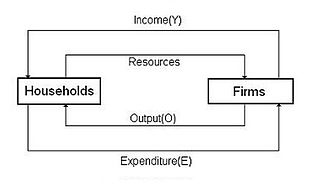

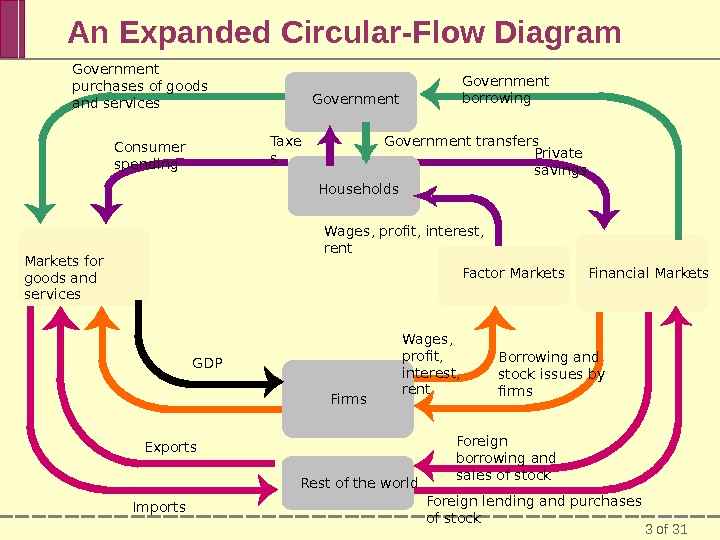






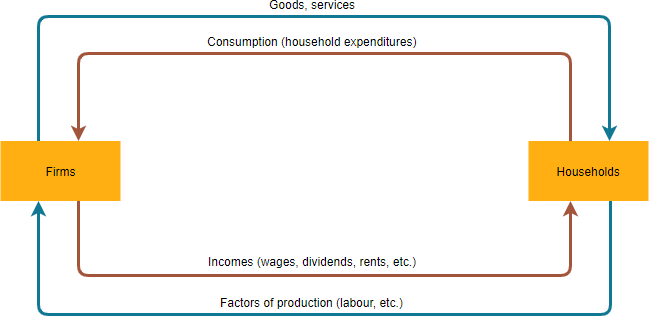







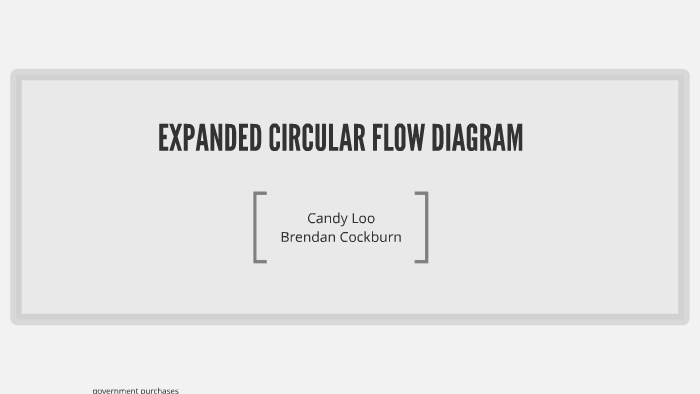

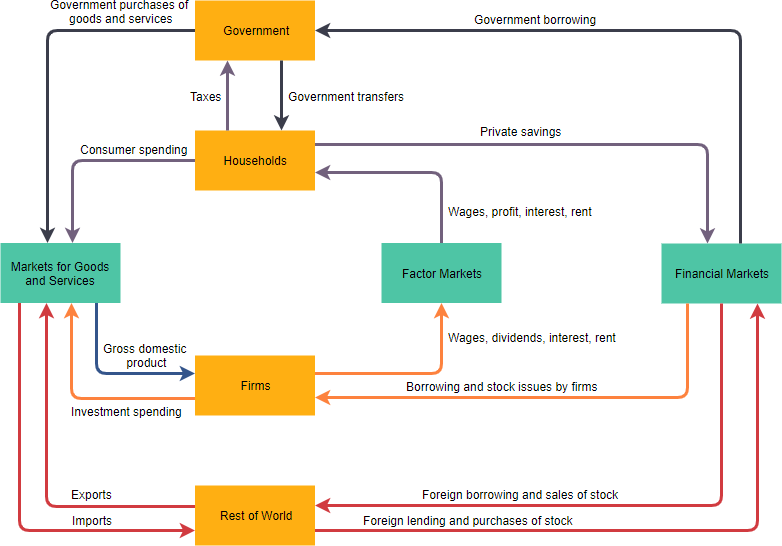

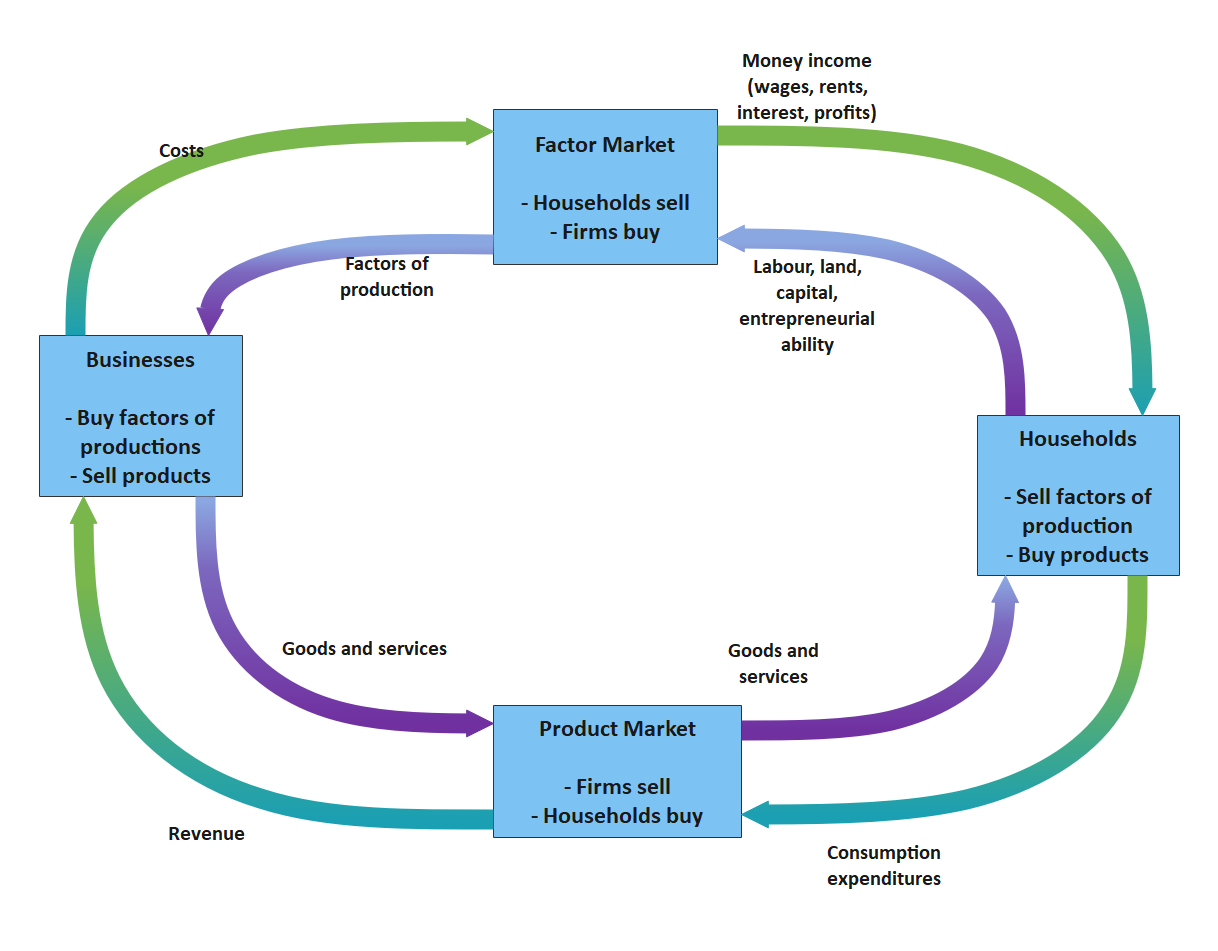


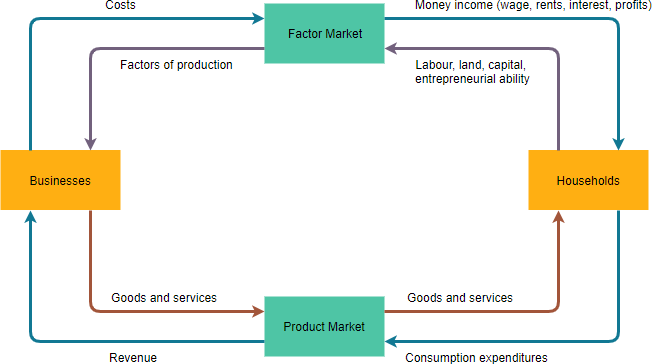







0 Response to "44 expanded circular flow diagram"
Post a Comment